I am using CompletableFuture to run a long running operation. Meanwhile, i use SwingWorker to update a progress bar with increments of 5.
JProgressBar progressBar = new JProgressBar();
progressBar.setMinimum(0);
progressBar.setMaximum(100);
progressBar.setValue(0);
progressBar.setStringPainted(true);
CompletableFuture<NetworkToolsTableModel> completableFuture = CompletableFuture.supplyAsync(() -> asyncTask());
SwingWorker worker = new SwingWorker() {
@Override
protected Object doInBackground() throws Exception {
int val = 0;
while (!completableFuture.isDone()) {
if (val < 100) {
val += 5;
progressBar.setValue(val);
}
Rectangle bounds = progressBar.getBounds(null);
progressBar.paintImmediately(bounds);
}
return null;
}
};
worker.execute();
The progress bar doesn't update until the asynchronous method is finished. I have also tried doing this operation on the EDT thread, but to no avail. What you are seeing is basically me trying to just do trial and error at this point.
Why is the progress bar not updating? How can I fix this?
